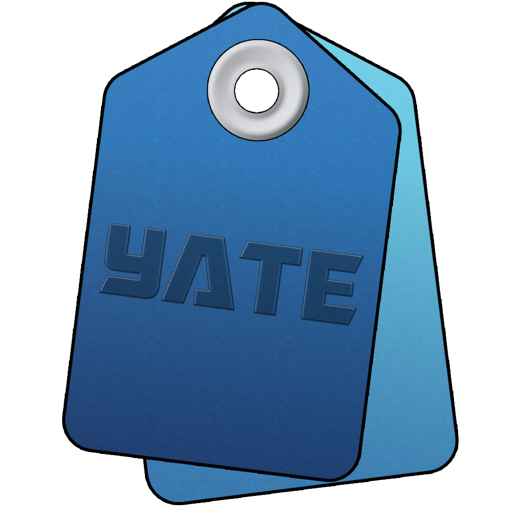

If a default action has been specified in the Action Manager, it will be run whenever files are dragged to the dock icon or opened via the Finder's Open With command. You can disable the running of the default action if Yate is already open via the Only run the default action if Yate is not already open setting.
It is possible to have an action run automatically when you save files. See Automatically Running an Action When Saving Files for more information.
The Batch Processor by default requires a user to click the Start button when it is launched by the Stop Action and Run Batch Processor action statement. You can optionally enable the process to start immediately by setting the Enable Batch Processor auto start from Stop Action and Run Batch Processor option.
When the Batch Processor is done its panel remains open and allows you to view the created log file. The last created Batch processor log file is always available on the View menu. You can set the Automatically close the Batch Processor panel when done option to have the panel close when done. Note that the setting is ignored if the Batch Processor was cancelled or if it was running in any mode other than traversing disk folders.
An action can use the Modify Application Settings statement to override the Automatically close the Batch Processor panel when done setting. Overrides will be ignored unless you enable the Allow actions to override the auto close Batch Processor panel setting option.
Starting in Yate v8.0, the batch processor will report potential disconnects of a network drive in the UI. On the displayed panel, you can enable the silent ignoring of the errors. The error will always be reported in the produced log file. The Do not report potential drive/network errors in the UI when batch processing setting can be enabled to never report the errors in the UI.
Use monospace font for the Action Pending window will cause a fixed width font to be used.
You can control if the Action Pending window is auto resized when displayed. This can also be changed when the window is displayed by right clicking on the icon and toggling the current setting.
By default the Ask statement displays Cancel, True and False buttons. You can assign different labels to the True and False buttons. eg. Yes and No. Note that the meaning of the buttons is fixed and cannot be changed. The middle button always implies True, while the rightmost button always implies False. These values can also be set on a per statement basis.
Via the Treat container object item names as case insensitive setting, you can set the default value for container object item name sensitivity. More information can be found in Container Object Names.
You can configure how dates are displayed in the Action Manager by supplying a template. An empty template assumes the Yate default. An * will display the system's short date for all days except today, when the system's short time will be displayed. A modified template is only applied the next time the Action Manager is opened. You can open the Action Manager or force a redisplay via the Display button. Templates are composed as described in Unicode Technical Standard #35. You can find the relevant specification here.
As an extension Yate allows you to separate a template into a description for dates in today and one for all dates not in today. The | character is used as a separator as follows:
today's template|other days' template
Examples:
- Yate default (ISO 8601)
- yyyy-MM-dd'T'HH:mm:ss
Today as hours(12), minutes, seconds, am or pm. Other as year, month, day- hh:mm:ss a|yyyy-MM-dd
You can choose a variety of different backgrounds for the Action Manager's statement list panel.
Use monospace font for Action Editor statement display will cause a fixed width font to be used when displaying action statements.
A warning will be issued whenever an action field which requires a named variable, contains an escaped named variable sequence. While this is not an invalid scenario, it is not typical. The warnings can be disabled when issued and reenabled by doing a Reset Warnings from the Yate menu. The Display warnings for potential incorrect named variable usage setting provides a means of re-enabling the setting without having to reset all warnings.
You can choose a number of different backgrounds for the list of statements in the statement panel.